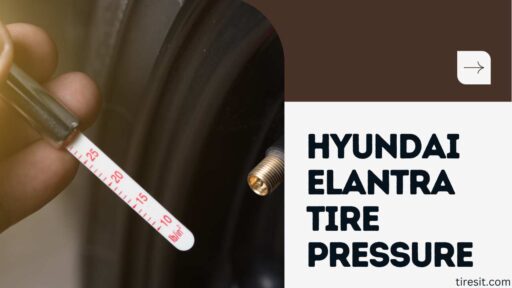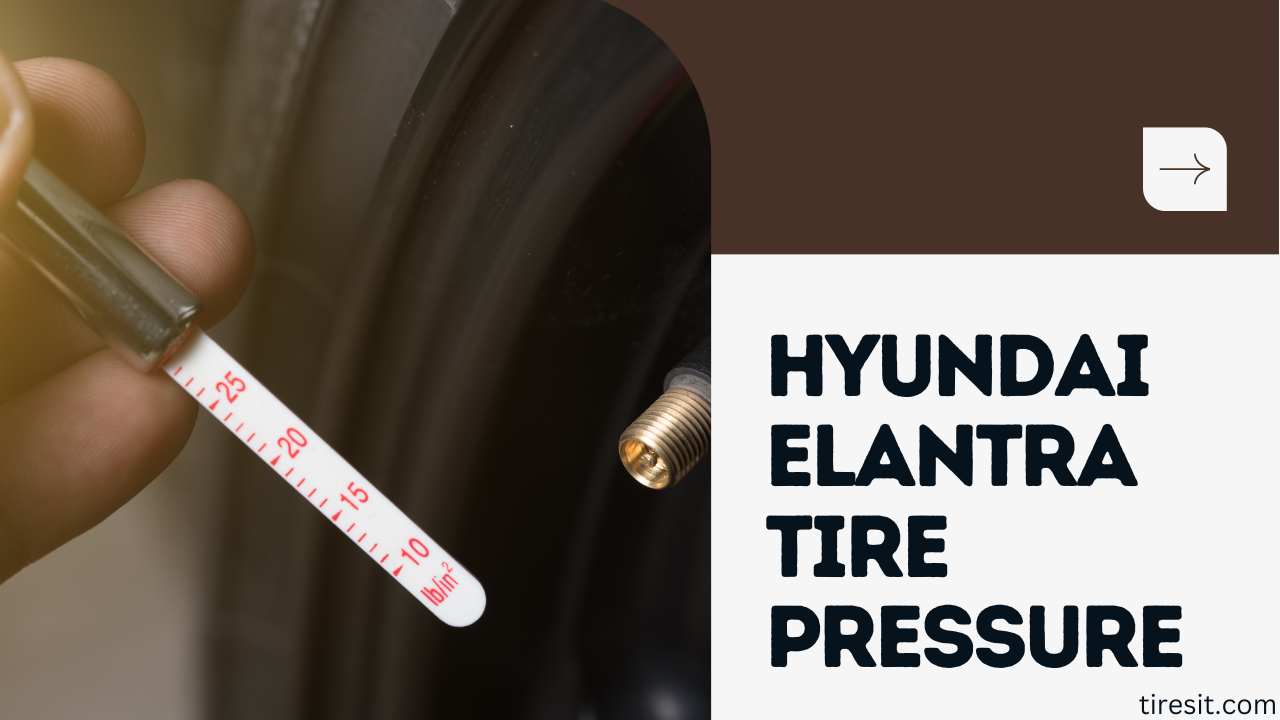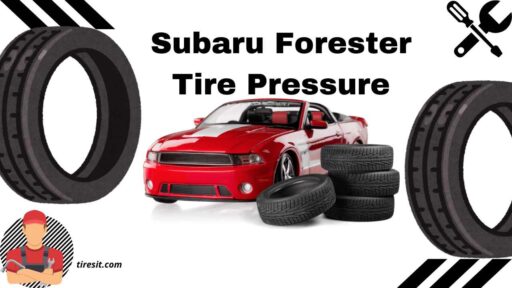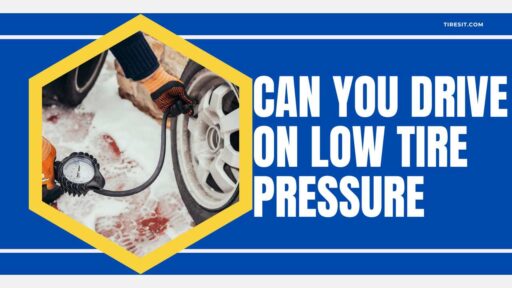Enhance your Hyundai Elantra’s fuel efficiency and handling by monitoring and adjusting the tire pressure. Our website offers expert guidance and tips on maintaining the ideal tire pressure for a comfortable and safe driving experience.
Hyundai Elantra Tire Pressure: A Comprehensive Guide
The significance of maintaining optimal tire pressure in your Hyundai Elantra cannot be underestimated. Nevertheless, navigating through the recommended PSI levels and common misconceptions can be a challenge. This guide will separate fact from fiction and ensure your Elantra’s tires are properly inflated for peak performance!
Importance of Maintaining Optimal Tire Pressure
As an owner of a Hyundai Elantra, you must comprehend the importance of maintaining optimal tire pressure. The security, performance, and longevity of your vehicle depend on proper tire pressure. Your driving experience is enhanced by properly inflated tires which further reduces accidents.
It is important to understand that properly inflated tires provide better traction when driving, thereby enabling one to maintain control as desired. It is detrimental to use underinflated tires because they have poor handling and do not grip well on wet or slippery road surfaces. Conversely, over-inflated tires lead to harsher rides that compromise comfort, hence the overall driver experience.
Understanding the Recommended Tire Pressure for Hyundai Elantra
The recommended tire pressure for your Hyundai Elantra can be broken down as follows:
Finding the Recommended Pressure
Manual: A more accurate source when it comes to inflate tyres is by referring to manual tyre manufacturers’ recommendations mentioned in Hyundai Elantra manual model year 2017 psi kPa.
Tire Placard: On some vehicles this information may also be found on fuel door or near bonnet near hinge bolts or rubber gasket containing weight code GVWR GAWR Engine tow bar brakes wiring harness lighting radiator Marking etc .
Understanding Variations
Model Year: However, given a different model year, i.e., years 2005-2016, recommends slightly different inflating pressures than those listed above; make sure to refer specifically to this information regarding individual vehicles since actual readings do vary among makes/models built within a same time frame due mainly differences between manufacturing plants (which could affect quality control), but such variation tends not to show up at dealership level because dealerships are franchised outlets rather than company-owned locations.
Trim Level: The tire pressure for different trims of the Elantra could be different in some cases. Always refer to your owner’s manual or tire placard for the exact details.
Reading the Pressure
PSI vs. kPa: The recommended tire pressure might be indicated as PSI (pounds per square inch) or kPa (kilopascals). Also, choose a gauge that displays either one and ensure that it matches those units when you check/inflate tires.
Why Recommended Pressure Matters
Safety: Car handling, braking performance, fuel efficiency, and tire wear all depend on proper tire inflation, which is important for safe driving every day.
Handling: Tires that are inflated correctly will help reduce skidding risks; however, too much air inside such tires can also lead to accidents happening faster if an emergency arises, especially under slippery conditions when there is little or no grip left between them due to waterlogged areas along highway shoulders, etc., making them less effective than normal (under normal circumstances).
Fuel Efficiency: Under-inflation causes more rolling resistance, hence lower gas mileage
Tire Wear: An incorrect or unevenly distributed amount of pressure can cause accelerated treadwear on certain parts leading to prematurely worn-out patterns as seen here below but differing from those shown above depending upon whether these figures refer just constant speed highway driving conditions only versus mixed routes over stop-go traffic situations and rougher terrains like gravel paths outside cities where heavier vehicles travel with greater frequency other similar factors influencing performance itself including driver skill level plus actual loads carried by passengers freight being transported worth multiple times weight allowed legally into roadway bridge structures
How to Check Tire Pressure
Regularly checking your Hyundai Elantra’s tire pressure is an easy yet crucial task. All you need is a tire pressure gauge, which can be bought at any auto parts store. Follow these steps:
Unscrew the valve cap on the tire you want to check
Push a gauge of tire pressure right onto the top in order to get accurate readings from air measurements at each wheel well without having to go through any process before getting good results after taking those readings, even if they are different during this phase depending upon what type vehicle it is, like van, sedan, etc., as shown by typical cars today (Figure 3).
Avoid touching the metal tip inside the nozzle while holding the tip down firmly over the rubber tube; this will prevent slippage between two parts and cause inaccurate measurements due to either slipping past one another.
They should always stay together until the final reading is obtained. Then, they should be released outwards only because they were pressed against them. This pressing causes errors, like a wrong display for occupants using the same unit in later stages. These stages include filling one tank and comparing the gas amounts when it’s full versus empty. Removing this does not seem to add anything. Both sides are connected through a thin black line. This line shows the level reached the halfway point. After that, no clear space is left across the width.
Take all rings off your fingers, put your earphones back into their case or keep them attached to the device, put sunglasses on top of your head, or remove the hat from over your eyes so that sunlight doesn’t disturb vision when looking directly upwards/ downwards)
If the pressure is low, add air until the desired pressure is achieved. If the pressure is high, release air until the proper pressure is attained.
Follow these steps for all four tires, including the spare.
Factors Affecting Tire Pressure
The following are some of the most important factors that can affect tire pressure in a Hyundai Elantra:
Temperature: Air inside your tires expands as temperatures rise, causing an increase in pressure, while cooler temperatures make it contract and lower tire pressure. This means you should regularly check your tire pressures, particularly when changing weather conditions.
Driving Habits: Driving aggressively; speeding, rapid acceleration, and hard cornering cause heat to build up in tires thus temporarily increasing tire pressure.
Vehicle Load: The weight of items carried in an individual’s car such as people and bags affects its tire inflation level. When carrying heavy loads, the recommended tyre pressures might have to be slightly adjusted so as to compensate and ensure that they are within safe limits. Consult your owner’s manual for specific recommendations based on load weight.
Tire Age: With time, tires naturally lose air due to slow penetration of air molecules through rubber which makes it extremely important to regulary check and adjust them as they get older.
Sun Exposure: Leaving a vehicle parked outdoors under direct sunlight increases its tyre inflation because of solar heat absorption by those tyres.
Leakage: Slow leaks resulting from punctures, defective valve stems or damaged rim seals cause gradual loss of air from tyres leading to decreases in their inflation levels.
Recommended Tyre Pressures: It is very important to heed Hyundai’s specified tire pressures for your Elantra model and size. The driver’s door jamb contains this information on a sticker, or one can find it in the owner’s manual. Using the wrong pressures causes unequal tire wear, lowered fuel mileage, and reduced control.
TPMS (Tire Pressure Monitoring System): Most modern Hyundai Elantras come with TPMS, which will alert you when tire pressure falls below a certain level. However, even if the system is useful, it is important to check your tire pressures regularly using an accurate gauge for correct measurements.
Consequences of Incorrect Tire Pressure
Failing to maintain proper tire inflation in your Hyundai Elantra can cause severe damage. Both under and over-inflated tires can put your life in danger on the road.
Under-inflated tires tend to be more heat-sensitive thus increasing chances of blowouts. It also decreases fuel efficiency as more energy is needed by the vehicle against added resistance. Underinflated tires wear faster and unevenly necessitating early replacement.
On the other hand, higher-than-normal tire pressure makes less contact with the road surface leading to reduced traction and stability. This negatively impacts upon your automobile’s handling and braking performances thereby augmenting chances of auto accidents happening. Over inflated tyres too are more worn out at their centers making them have shorter lives.
Benefits of Maintaining Optimal Tire Pressure
There are many advantages of maintaining optimal tyre inflation for one’s Hyundai Elantra. First, this keeps you safe on roads because there is maximum grip and stability. Properly inflated tyres increase control especially during emergency maneuvers whereby they minimize risks like skidding or spinning out of control.
Secondly, fuel efficiency is enhanced by maintaining optimal tire pressure. Underinflated tires have more rolling resistance, which requires the engine to work more and consume more fuel. So, when the tires are properly inflated, you save on fuel expenses and reduce your carbon footprint.
Lastly, optimal tire pressure also promotes tire longevity. Wear of the tires happens evenly when the tire pressure is within the recommended range, extending their lifespan. This means a longer period of smooth and comfortable riding without frequent tire replacements.
Tips for Maintaining Optimal Tire Pressure
- To keep your Hyundai Elantra’s tire pressures consistently optimized, follow these tips:
- Check your tires’ air pressure at least once monthly and before long trips.
- Buy a good quality gauge to ensure accurate readings.
- In extreme weather conditions, check your tire pressure more frequently.
- Avoid overloading your vehicle, as this can cause an increase in tire pressure.
- When you notice any signs of damage or uneven wear on your tire, consult with a professional inspector.
- Refer to your owner’s manual for specific maintenance requirements regarding tire inflation levels.
This will help you maintain safe driving conditions whilst enjoying the ride every time because of favorable Hyundai Elantra tires.
Common Misconceptions About Tire Pressure
Here are some myths about the correct air levels and other facts about Hyundai Elantra’s car tire inflation problems:
Misconception 1: All Hyundai Elantras require the same tire pressure
Fact: Whether you own a new or old model of Hyundai Elantras or even trims in-between different models may have different recommendations for their ideal air levels including some deviations based on trim level – regardless if it is bigger than standard or smaller than standard. For specific recommended tyre pressures for your automobile, look inside driver door frame stickers or check up with vehicle manufacturer instruction manual.
Misconception 2: Higher tire pressure is always better for gas mileage
Fact: However, while there could be a positive correlation between proper tire pressure and gas economy, too much air can lead to serious wastage of fuel. Tires that are overinflated have less traction, which means they might wear out irregularly and not contact the road properly. According to manufacturers, using the exact recommended tire pressures will help maximize fuel consumption while ensuring one’s own personal safety.
Misconception 3: I only need to check my tire pressure when I’m going on a long trip
Fact: The most common question is, “How often should I check my tire pressures.” In reality, tire pressure changes throughout the day depending on factors such as heat, cold, etc. Ideally, every month and before long journeys, you would want to maintain your tires’ optimum condition by keeping tabs on them every once in a while. Don’t forget to take care of your spare wheel as well!
Misconception 4: The pressure gauge at the gas station is accurate enough
Fact: Many times, those gauges are wrong; therefore, it’s better to get good quality ones like digital types that are more user-friendly.
Misconception 5: TPMS (Tire Pressure Monitoring System) warning light means I have a flat tire
Fact: Of course, if there is an enormous fall down in any of the four tires’ pressure, this would be signaled by TPMS l, right but this does not mean that tires are absolutely flat. If you see that TPMS light is on check also all four tires to make sure they hold proper air amount.
Tire Pressure Monitoring Systems
Today, the car industry uses tire pressure monitoring systems (TPMS) in many modern automobiles, including the Hyundai Elantra. These systems monitor the tire pressure and provide an alert if it goes below or above the recommended range.
Tire Pressure Monitoring System, abbreviated TPMS, can be a useful tool to ensure your tires are always in the safe range. Nevertheless, keep in mind that TPMS is not an alternative to regular manual checks. For accuracy, utilize a pressure gauge to confirm tire’s air pressure every time.
Frequently Asked Questions:
How often should I check my Hyundai Elantra tire pressure?
It is advisable to determine the air pressure of the tires at least once per month before embarking on long journeys.
Can I use a tire pressure specification meant for another Hyundai model?
No, this will mean the wrong recommendation for your specific car model, and therefore it is crucial that you look into the manufacturer’s recommendations provided specifically for your Hyundai Elantra model.
Is it right to just rely on TPMS for an accurate tire pressure reading?
However, TPMS may give incorrect readings; therefore, it should not be relied upon entirely. This calls for frequent manual checks.
Can I put more air in my tires than recommended as a fuel-efficient measure?
The answer is no; over-inflating them may affect their performance and safety, so they must be inflated according to manufacturer specifications.
Conclusion
Optimal Tire Pressure is a Major Consideration When Driving Hyundai Elantra because it affects the Safety of a Vehicle Together with its Performance. With an understanding of what tyre pressures are recommended, consistent monitoring and taking heed of recommendations offered one can have assurance of having his or her tyres in good shape.
Re-iterate that proper tyre inflation increases grip strength when driving reducing fuel consumption thereby saving money on fuel and increasing lifespan of tyres. Nevertheless; do not go by such myths and solely rely on Tyre Pressure Monitoring System (TPMS) as means of checking tyre pressure.
By giving preference to tyre maintenance, you can make sure that your Hyundai Elantra provides smooth and safe rides for years. Thus, take a few minutes out of your month and check the air pressure in your tires – it’s just a tiny effort to maintain road safety.





